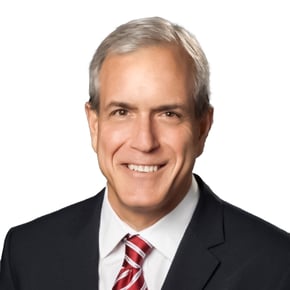Focus exclusively on doing things according to “best practice” in your role as CHRO, and you—and your colleagues—can end up paying a huge price.
I remember in one company where I was hired into the role of the Chief HR Officer. All I knew going in was that my predecessor had been involuntarily “exited” from the organization. I soon found out why. He had oriented everyone in HR towards perfecting processes and providing superior service to all business units. In theory, a worthwhile endeavor. In practice, it was a recipe for failure.
He had created a vast compendium of cutting-edge best practices and well-engineered processes, a hodge-podge of brilliant ideas that weren’t connected to creating value. This not only generated confusion and unnecessary complexity in the organization. It also created a situation where leaders were insulated from their responsibility for doing the heavy lifting with their teams.
The scorecard for the CHRO was flashing green, and he happily shared it with anyone and everyone who would listen. Meanwhile, all the scorecards for the business unit leaders were blinking amber or burning red. The business itself was dramatically underperforming. To make matters worse, my predecessor—naive or blind to the consequences of his choices, I’m not sure which—kept questioning why they could not get the business to perform at an acceptable level.
He wasn’t the only one questioning. So was the board. It wasn’t long before a new CEO showed up on the scene. Several members of the executive leadership team, including myself as the new CHRO, wondered how it could be that the business had been underperforming while HR had been reportedly doing a great job.
Digging deeper, I discovered that, at the time, the HR function constituted close to 25% of the headcount in the corporate office. That 25% generated more things to be done than you could imagine. All that new work was lobbed over to the business units. Admittedly, all of it was innovative and had been thoughtfully developed with the best of intentions. The problem was every new “thing” required quite a bit of investment to set up and launch. Individually, each one may have created some value. Collectively, they represented a burdensome tax on the organization that didn’t create value and actually resulted in quite a bit of friction between corporate HR and the broader organization.
The moral of the story? HR leaders should be wary of copying and pasting best practices and codifying “process for the sake of process.”
Such an orientation makes it all too easy to lose sight of the business outcomes. When that happens, all hell can break loose.
3 SIGNS OF TROUBLE
I recommend CHROs watch for and apply the appropriate remedy to these warning signs of impending trouble:
1. Corporate headcount is high. Many smart, ambitious people in HQ means many more objectives to hit on performance appraisals. This, in and of itself, naturally generates more work. The best remedy? Limit headcount in corporate roles, particularly in HR, and focus the ones you do have on delivering initiatives that create value and have the full engagement of the executive leadership.
2. Work is not directly linked to value. Make sure everything that is being done or that is being proposed to be done in HR directly links to creating, capturing, and protecting value.
3. Alignment is missing. Get the full alignment of your executive leadership around all initiatives—old and new—including their timing and the provision of capital and talent resources necessary for their success.
These three ‘mini-sins’ result in what I consider to be the cardinal sin of HR: solutions in search of a problem.
This happens when leaders, following the whims of best practices espoused in popular media, feel obliged to try the latest “fad” solution just to be on the cutting edge. There are few things worse than a fix advocated by those who don’t have a deep understanding of what drives corporate performance, let alone the ability to diagnose and address a business’s problems.
Before you take a dive into the solution space, have a dialogue with the rest of your executive team around the intended value creation outcomes for the enterprise. Come up with ones that both HR and the business can take ownership of together. Then, link your strategies for managing, developing, acquiring, and retaining talent to those business outcomes. Your efforts will not only act like a tonic for their concerns. They will also act as the foundation for individual and organizational performance.

